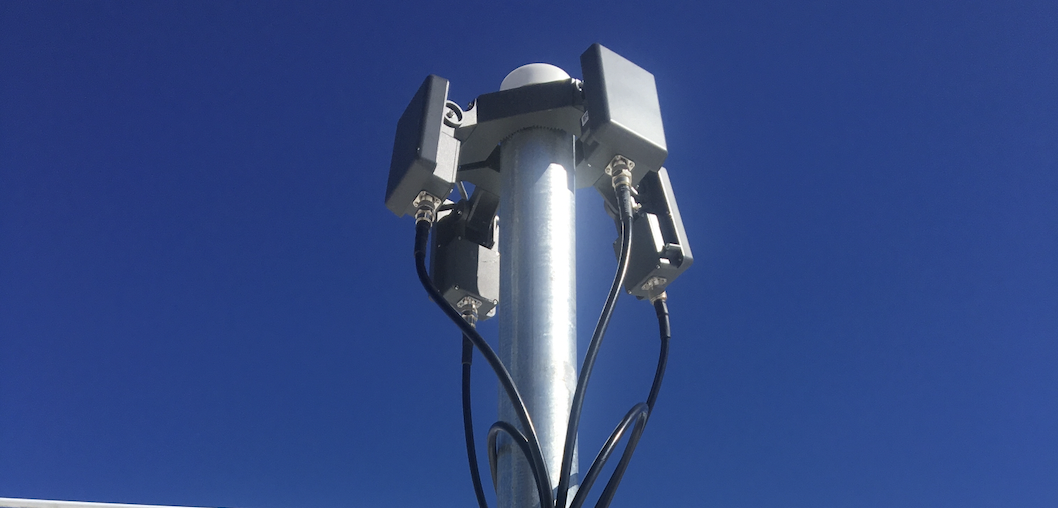For a security director at a power plant or energy facility, the threats are no longer just ground-based. The proliferation of inexpensive, high-capability drones presents a new and dangerous aerial threat vector.
A drone, costing less than a laptop, can be used to conduct detailed surveillance on your transformers, cooling systems, and security patrol routes, all from a safe distance. More advanced drones can be weaponized with flammable payloads or even used to execute cyber-physical attacks by spoofing GPS or attempting to breach control networks.
The question is no longer if you need a counter-drone strategy, but how to implement one. Simply installing a single sensor is not a plan; it's a vulnerability.
You need a multi-layered playbook. Here is a step-by-step walkthrough of how to build one.
The Problem: A Silent Threat from Above
A drone doesn't need to be weaponized to be dangerous. The primary threat is surveillance. An unauthorized drone conducting reconnaissance is the first step in planning a physical attack.
- Threat Vector 1: Mapping Weaknesses. An operator can fly a drone in a high-altitude "mapping" pattern to build a 3D model of your facility, identifying blind spots in your camera coverage or gaps in your perimeter fence.
- Threat Vector 2: Asset Identification. The operator can then fly lower to get high-resolution thermal and optical video of your most critical assets—like transformers or SCADA control rooms—to plan a future attack.
- Threat Vector 3: Pattern-of-Life Analysis. The drone can return multiple times, hovering from a distance to log guard patrol schedules, shift changes, and security response procedures.
The Solution: An Active C-UAS Playbook
Here is how you move from a reactive to a proactive security posture using a comprehensive drone detection platform like AirGuard.
Step 1: Detect ("The First Alert")
You cannot stop a threat you cannot see. The first layer is immediate, 24/7 airspace awareness.
A modern C-UAS platform like AirGuard provides real-time detection of drones and their operators. As soon as a drone is powered on within your monitored airspace—even before it takes off—your team is alerted.
- Action: Your security operations center (SOC) receives an instant notification via SMS, email, or an integrated platform like WebEOC.
- AirGuard Feature: The AirGuard Map Interface immediately plots the drone and the pilot's location on a satellite map. You aren't just looking at a dot in the sky; you see two—the drone and its controller.

Step 2: Assess ("Friend or Foe?")
The worst thing a security system can do is flood your team with false alarms. Your next step is to instantly assess the threat's intent.
- Action: Your operator checks the drone's "friendly" status. Is this one of your own security or inspection drones?
- AirGuard Feature: The Whitelisting function allows you to register all your authorized "friendly" drones. If the drone is not on that list, it is automatically flagged as unauthorized, eliminating guesswork and allowing your team to focus on real threats.
Step 3: Track ("What is its Goal?")
The unauthorized drone is now airborne and approaching your perimeter. You need to know its exact target.
- Action: Your SOC operator watches the drone's live flight path in real-time. Is it heading for the perimeter fence? Is it hovering over a critical substation? Is it following a security vehicle?
- AirGuard Feature: The platform provides live, second-by-second Drone Tracking, showing its precise altitude, speed, and flight path. You can simultaneously track the Pilot's Location, watching if they are stationary in a vehicle or moving on foot. This gives you a complete, actionable picture of the incident.
Step 4: Respond ("Neutralize the Threat")
You have now confirmed a hostile drone is conducting surveillance. It's time to activate your response plan.
- Action (Ground): You have the pilot's exact GPS coordinates. You can dispatch your security team or, more effectively, coordinate directly with local law enforcement to interdict the operator. This is the safest and most legally sound way to stop the threat.
- Action (Air): If you have the legal authority to do so, you can activate authorized mitigation (effector) systems.
- AirGuard Feature: The system provides the prosecution-ready evidence needed for law enforcement. You have a log of the pilot's location and the drone's every move, proving their intent to trespass on your critical infrastructure site.

Step 5: Analyze ("Prevent the Next Attack")
The incident is over, and the operator was apprehended. The job is not done. Now, you must learn from it.
- Action: You need to understand the attacker's full plan. Was this their first time? Did they test your defenses last week? What was their ultimate target?
- AirGuard Feature: The Replay and Analytics functions are your forensics tools. You can access historical flight data to see if this drone (or its pilot) has flown near your facility before. You can generate "heatmaps" to see which parts of your plant are targeted most often, allowing you to harden your physical defenses in those specific areas.
From Vulnerable to Prepared
Protecting a power plant from drone threats isn't about buying a single "drone-killer" device. It's about implementing an intelligent, end-to-end system. By following a playbook of Detect, Assess, Track, Respond, and Analyze, you change the entire dynamic. You are no longer waiting to see what happens—you are in control of your airspace.
Ready to build your C-UAS playbook? Contact Airsight today to schedule a live demo of the AirGuard platform.

%20(1).webp)









